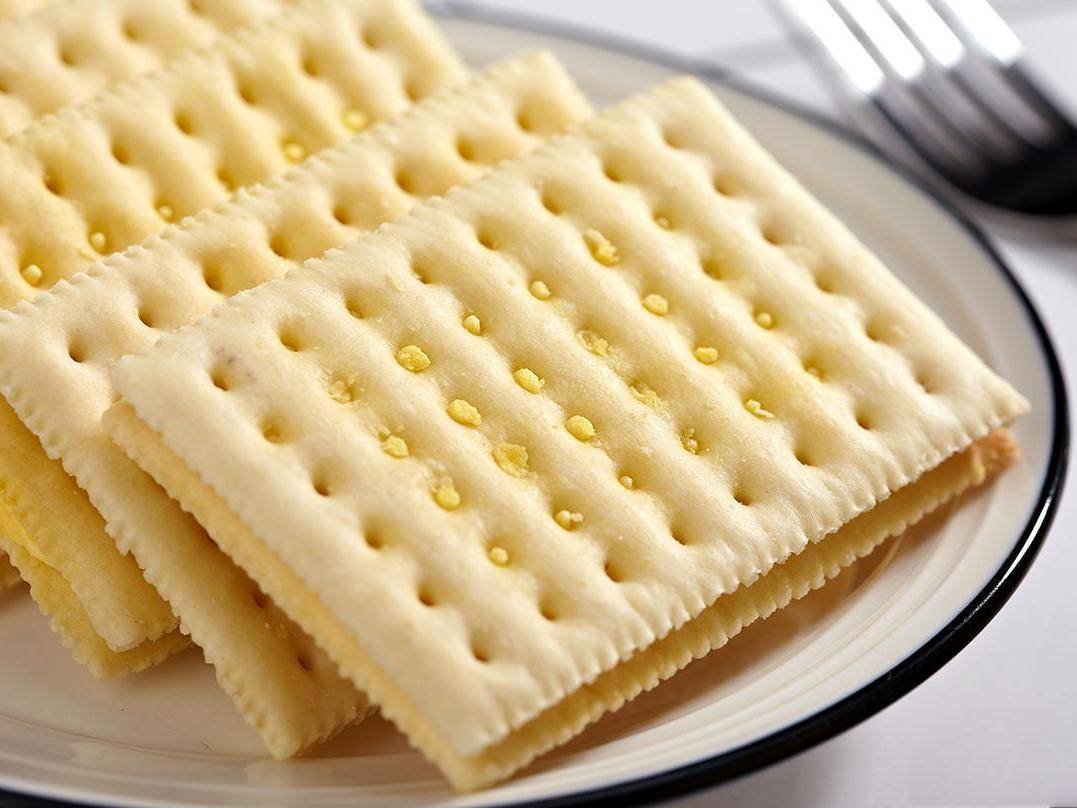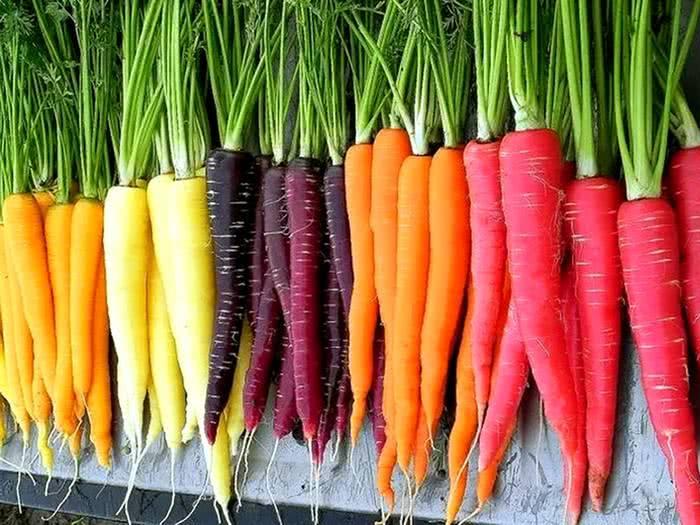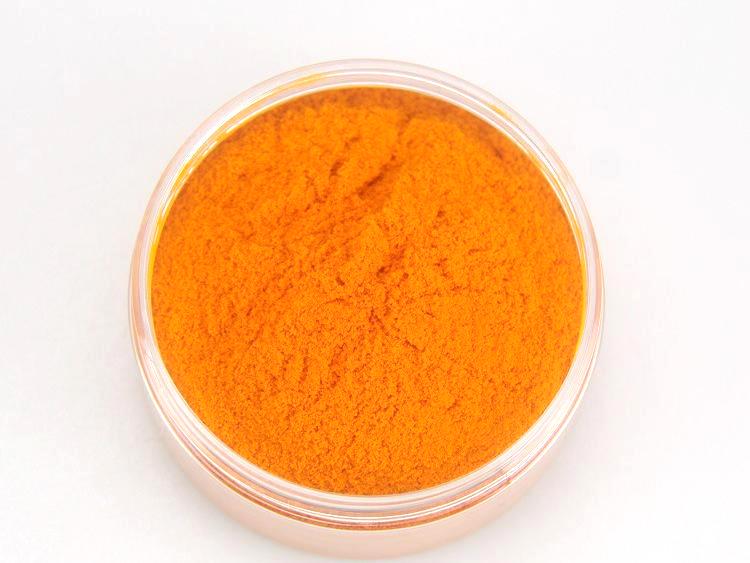What Is the Use of Beta Carotene in Animal Nutrition?
With the rapid development of animal husbandry and the gradual expansion of ruminant farming, consumers are paying more attention to the production of high-quality animal products, the nutritional value of the products, and the impact on their health [1]. In recent years, the expanded use of concentrated feed resources has not only placed a huge strain on the environment, but also increased the safety risks of animal products due to the excessive use of feed additives. As a sustainable development strategy, expanding the use of roughage is an effective means. However, to achieve this goal, it is necessary to explore and better utilize its potential functional resources, thereby enhancing the nutritional value of roughage. Green forage is an important source of feed for ruminants. It is rich in plant photosynthetic pigments, such as chlorophyll and β-carotene. After animals eat it, these pigments can affect the nutritional metabolism of ruminants and the quality of animal products [2-3].
Beta-carotene is one of the most important photosynthetic pigments in plants and is widely found in nature [4]. It has strong antioxidant properties, can remove free radicals in the body, reduce the production of lipid oxidation products, and has a positive effect on animal health [5]. It is also the main raw material for ruminants to synthesize vitamin A [6], and can meet the vitamin A needs of cattle and sheep [7]. In addition, β-carotene plays an important role in cell differentiation, growth, gene expression and immune function in ruminant animals [8]. β-Carotene is mainly found in the liver of ruminant animals, where it is converted and stored [9], and the content in cattle is significantly higher than that in goats and sheep [10]. A study found that after grazing cattle were fed a diet based on temperate pasture for 105 days and then switched to a diet based on grains, the serum β-carotene content decreased from 20.1 μg/mL to 0, indicating that the β-carotene content of the diet and feeding conditions affect the serum β-carotene content [11].
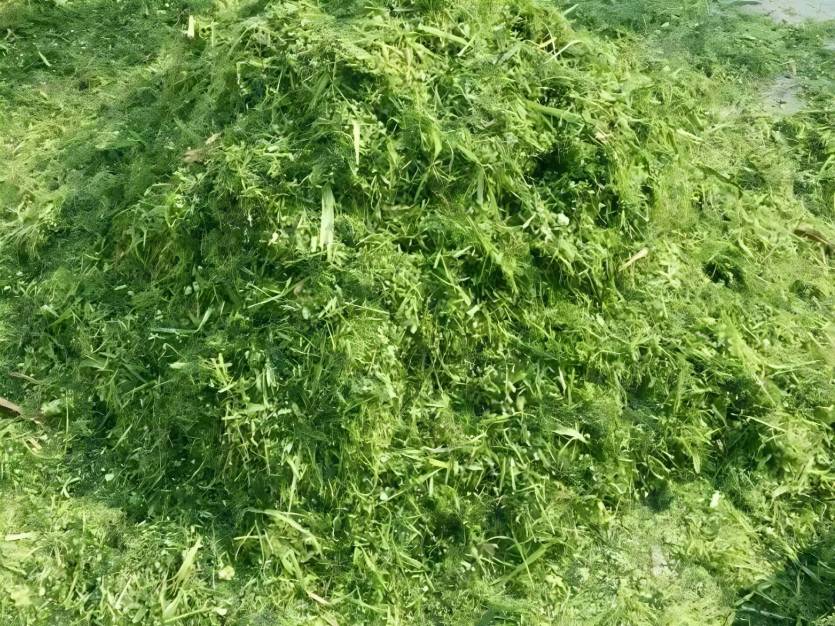
In addition, some studies have shown that the content of β-carotene in animal serum is also affected by season and gender [12-13]. β-carotene not only has the effect of improving the body's immunity and reproductive ability [14], but is also one of the important feed additives [15]. When used as an additive, it affects the feeding cost and the value of animal products to a certain extent [16]. Therefore, it is necessary to make full use of the natural β-carotene resources in roughage, feed green forage efficiently, and thereby regulate the animal body and produce high-quality animal products.
In summary, this paper focuses on the β-carotene resources in green forage, and reviews the dynamic changes, influencing factors, and effects on the ruminant body and products of the β-carotene content in pasture, combined with the current research progress at home and abroad.
1. Metabolism and absorption of β-carotene in ruminants
Ruminants can obtain β-carotene by eating green forage. After β-carotene enters the animal's body, it reacts with digestive enzymes in the gastrointestinal tract and is separated from protein complexes. When it passes through the duodenum, it forms chyle microparticles together with other lipid substances under the emulsification of bile, and is finally absorbed by the epithelial cells of the small intestinal mucosa [17]. The absorbed β-carotene is immediately transferred to one side of the intestinal epithelial cells, where it is converted to vitamin A by a symmetrical cleavage reaction under the action of enzymes, thus meeting the needs of the animal body [18-19].
In addition, β-carotene ingested by the liver is stored in the liver or secreted into very low-density lipoproteins, and the protein-bound β-carotene is taken up and stored by extrahepatic tissues [20]. The metabolism, absorption and distribution of β-carotene in ruminants is also affected by animal species [21]. For example, in cattle, most β-carotene is found in the serum and adipose tissue, while in sheep and goats, it is stored more in the liver [22]. It has been reported that excessive β-carotene can affect the absorption of phosphorus, thereby hindering normal bone metabolism and mineralization [23]. Serum alkaline phosphatase (AKP) is one of the important enzymes of clinical diagnostic significance [24]. Oral administration of high doses of β-carotene to dairy cows can interfere with the normal metabolism of AKP [25].
There are many factors that affect the absorption of β-carotene in ruminants. Due to the fat-soluble nature of β-carotene, the fat content of the feed affects its absorption. It has been found that the oleic acid content in cattle is positively correlated with the β-carotene content [26]. The addition of free fatty acids to the infusion solution can significantly promote the absorption of β-carotene [27]. Lee et al. [28] showed that a lack of vitamin A can lead to an increase in the absorption rate of β-carotene, and that bile salts in animals can also indirectly affect the absorption of β-carotene [29]. In addition, the levels of nutrients such as fibre and protein in the feed may also affect its absorption [30]. Due to the complex composition of rumen microorganisms and the many factors that affect the nutrient metabolism mechanism, further research is needed on the absorption of β-carotene.
2. The effect of β-carotene on ruminants
2.1. The effect of β-carotene on the rumen of ruminants
The rumen is an important digestive organ of ruminants, and its function directly affects the animal's physiological metabolism. Some studies have shown that β-carotene can promote the growth of cellulolytic bacteria in the rumen of ruminants, thereby promoting the absorption of fatty acids in the rumen [31]. After ruminants ingest β-carotene, not only can it effectively reduce the content of volatile ammonia nitrogen in rumen fluid, but it can also increase the content of microbial protein [32].
Liu Liling et al. [33] studied the effects of β-carotene on the rumen environment in detail. Their results showed that the pH of the rumen was not affected by the addition of β-carotene, but as the amount of β-carotene added increased, the content of microbial protein in the rumen decreased, and the total volatile fatty acid content increased significantly. Although the above report roughly clarifies the relationship between the rumen environment and β-carotene, its mechanism of action and some influencing factors are still unclear. For example, the interactive effects of different rumen environments and different β-carotene contents on the rumen environment need to be further explored.
2.2 Effect of β-carotene on antioxidant capacity in ruminants
β-carotene is an effective antioxidant that can effectively prevent photo-oxidation and lipid oxidation [34]. The antioxidant system in ruminants consists of chain reaction agents and antioxidant enzymes. The indicators that can reflect the antioxidant capacity are superoxide dismutase (SOD), catalase (CAT), glutathione peroxidase (GSH-Px) activity and total antioxidant capacity (T-AOC).
Studies have shown that supplementation of β-carotene in the diet of ruminants significantly increases the levels of these substances in serum [35]. Although some reports have shown that the antioxidant capacity of the body increases with increasing β-carotene supplementation, negative results have been observed at higher doses [36]. Therefore, further research is needed to determine the more effective β-carotene supplementation dose. In ruminants, β-carotene is converted into vitamin A. Zhang et al. [37] revealed the role of β-carotene and vitamin A in antioxidant properties. The experiment showed that β-carotene itself had a direct effect on the antioxidant properties of beef serum, and its metabolite vitamin A had little effect on antioxidant properties.
2.3 Effect of β-carotene on the reproductive performance of ruminants
Studies have shown that adding an appropriate amount of β-carotene to the feed of dairy cows can not only increase its blood content, enhance the function of lymphocytes and phagocytes and thus improve disease resistance, effectively reduce the incidence of retained afterbirth, metritis and mastitis [38], but also increase the mating rate and pregnancy rate [39-40]; Some studies have confirmed that the time of placental shedding in dairy cows is correlated with the β-carotene content in the feed [41]; De Ondarza et al. [42] showed that feeding β-carotene to cows for a long time is more conducive to improving their reproductive rate. Beta-carotene not only effectively promotes sperm synthesis, but also improves the density and quality of ruminant sperm [43]. Adding an appropriate amount of β-carotene to dairy cows in the late stages of pregnancy can shorten the time it takes for the uterus to heal and greatly reduce the chance of early miscarriage [44]. Studies have shown that β-carotene can stimulate the production of progesterone and promote estrus in dairy cows [45], while also increasing the success rate of fertilization [46].
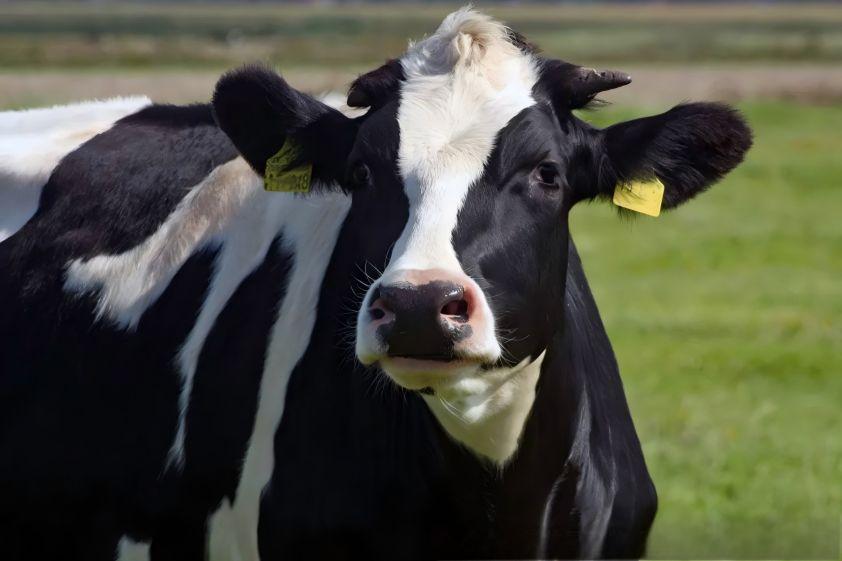
Li Ziyan et al. [47] compared the amount of beta-carotene added, and the results showed that adding 400 mg/(head·d) beta-carotene can significantly shorten the time to the first estrus after calving and reduce the incidence of mastitis. Zhou Guiyun et al. [48] and Liu Huifang et al. [49] showed that adding 300 mg / (head · d) β-carotene can significantly reduce the incidence of ovarian cysts and mastitis. Zhang Junli et al. [50] showed that adding 300 mg/(head·d) β-carotene can effectively increase the conception rate of dairy cows. Ma Jifeng et al. [51] found that adding 200–300 mg/(head·d) β-carotene to dairy cows after calving can effectively increase the mating rate. In the studies listed above, under different feed rations, different ages of cows and different feeding conditions, the optimal amount of β-carotene added is 200–400 mg/(head·d).
Li Qiufeng et al. [52] studied in detail the effect of β-carotene on the reproductive performance of bulls, and showed that after adding an appropriate amount of β-carotene to the feed, it can effectively improve the vitality of fresh semen, sperm density, post-freezing viability, acrosome integrity rate, and reduce the sperm deformity rate. Liu Ruxiang et al. [53] reported that adding a higher dose of β-carotene to the feed affects the ejaculate volume of bulls, but at a dosage of 100 mg/kg, no difference was observed. Studies have shown that there is a negative correlation between the testosterone content of semen and the sperm deformity rate [54]. In summer, high temperatures can cause the hypothalamic-pituitary-testicular axis of ruminants to be suppressed, resulting in a decrease in serum testosterone secretion. Another study by Li Qiufeng et al. [55] confirmed that β-carotene can effectively increase the serum and seminal testosterone content, which once again shows that β-carotene has a positive effect on the reproductive performance of bulls.
2.4 Effect of β-carotene on the production performance of ruminants
β-carotene is poorly water-soluble and unstable, and its structure is prone to breakage after being stimulated by light and heat, which limits its effective application in the production of ruminant products [56]. Nevertheless, β-carotene also has a certain positive effect on the production performance of ruminants. Beta-carotene can act on mammary gland cells and improve their lactation ability. Therefore, adding beta-carotene to the feed of postpartum dairy cows can significantly increase milk production and improve milk quality [57]. In addition, it has been reported that adding 900 mg / (head · d) β-carotene to the feed can significantly increase milk production, and the milk fat and protein content can also be significantly improved [58]. Because β-carotene can promote the immune response of cytokines and induce lymphocyte proliferation, it is very effective in reducing the somatic cell count (SCC) in milk [59]. Some experiments have shown that adding 300 mg / (head · d) β-carotene to the feed can significantly reduce the somatic cell count in milk and further improve milk quality [60].
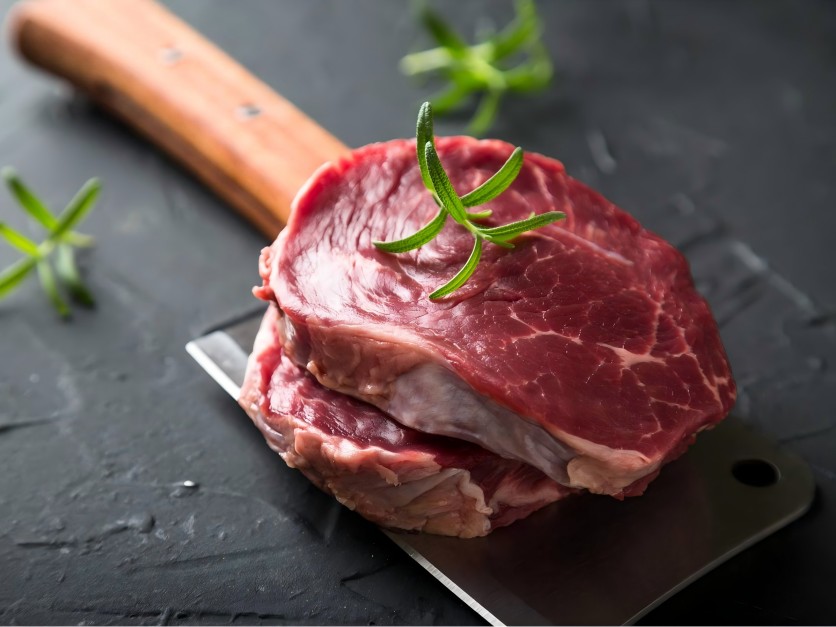
Li Xinhua [61] tested the effect of β-carotene on meat quality and found that adding 1,200 mg/(head·d) β-carotene significantly reduced the yellowishness (b*) brightness (L*) and redness (a*) of the meat, indicating that β-carotene can exert an antioxidant effect, improve the saturation of meat color, thereby improving meat quality. Jin Qing et al. [62] showed that supplementing β-carotene in the feed can improve the slaughter rate and net meat yield of beef cattle, but has no significant effect on the indicators of carcass quality. After β-carotene is absorbed in the small intestine of ruminants, some of it is converted into vitamin A, while the rest is transported to the liver for storage [63]. The vitamin A content of the feed is an important factor affecting the formation of beef marbling [64]. Although supplementing β-carotene in the animal's feed has no effect on the deposition of beef marbling and fat thickness [7], the vitamin A synthesized in the animal promotes the distribution of subcutaneous stored fat into the muscles [65-66]. The above results show that vitamin A, which is synthesized from β-carotene, has a limited effect on ruminants. This vitamin A can promote the metabolism of beef cattle and supplement the body's needs [7], but it is not enough to affect the formation of marbling in beef cattle.
3. Changes in the content of β-carotene in green forage and feed and its application
3.1 Changes in the content and preservation of β-carotene in green forage and silage
β-carotene is widely found in pasture, and its content is affected by fertilization, harvest stage and pasture species. The β-carotene content is significantly higher under high nitrogen fertilization conditions, and higher β-carotene content can also be obtained by early harvesting [67]. After natural wilting, its content will also decrease significantly [68]. The β-carotene content in legumes is generally higher than that in forage [69]. β-Carotene is more easily oxidized after plants are cut [70]. After the grass is harvested and prepared into hay, 80% to 90% of the β-carotene is lost [71]. Under normal circumstances, after the grass is silaged, the loss of β-carotene is 40% to 60%, and if the silage quality is good, the loss can be less than 20% [72].
Lv et al. [73] showed that the loss of β-carotene after ensiling Italian ryegrass was less than 10%. Some studies have also investigated the effect of additives on the preservation of β-carotene [73-74]. The results of Lv et al. [73] showed that adding lactic acid bacteria to ensiled Italian ryegrass can better preserve β-carotene (the pH of ensiled Italian ryegrass is 3.9), while Liu Qinhua et al. [74] found that adding lactic acid bacteria with strong fermentation ability to elephant grass can accelerate the loss of β-carotene (the pH of elephant grass ensilage is 5.4). The above differences may be due to different forage species and storage temperatures (25 and 15 °C, respectively) or pH.
M üller et al. [75] showed that there is a certain correlation between the β-carotene content and the lactic acid content in the fescue grass after ensiling (pH 5.16), and high lactic acid content is more likely to cause β-carotene decomposition. Lindqvist et al. [76] reported that the decomposition rate of β-carotene in ensiled grass is affected by the ensiling environment and acidic additives. In addition, the preservation of β-carotene is also affected by the combination of forage, for example, a mixture of timothy and clover can more effectively preserve β-carotene. In addition, some studies have observed the effect of different silage times on β-carotene content. For example, Liu Qinhua et al. [74] found that the preservation effect of elephant grass silage for 35 or 70 days was significantly better than that of Kala [77] preserved for 180 days. It can be seen that short-term storage has a better effect on the preservation of β-carotene.
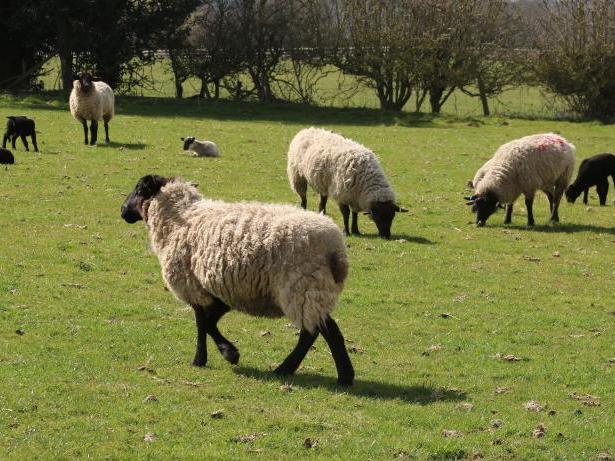
3.2 β-Carotene content in ruminant animal feed
Although a large number of studies have explored the amount of β-carotene added, there have been relatively few studies on the role of β-carotene in feed. Zhang et al. [37] tested the β-carotene content of a basic feed ration and found it to be about 34 μg/g DM. Calculating from the feed intake, a 500 kg beef cattle consumes about 500 mg of β-carotene from the feed ration every day.
In many experiments with ruminants in captivity, the roughage is usually composed of hay and silage. As described above, the loss rate of β-carotene in silage grass is 40%–60% [72], and it is as high as 90% [71] in hay, which greatly reduces the animal's intake of β-carotene. Therefore, feeding ruminants grass or grazing can more effectively supplement β-carotene. We compared the β-carotene content of some common roughage. The content in fresh Italian ryegrass ranges from 60 to 230 μg/g DM (depending on the harvesting stage and the amount of top dressing) [67]. The content of a mixture of white clover and timothy grass after harvest is about 56.2 μg/g DM [76]. red clover mixed with oryza sativa contained about 35.6 μg/g DM (without top dressing) [76], alfalfa contained 179–211 μg/g DM [78], elephant grass contained about 450 μg/g DM [74]. The above data clearly show that feeding ruminants with high β-carotene content forage can effectively replace β-carotene preparations. In addition, the β-carotene content of tropical forage is much higher than that of other forages, which also provides favorable conditions for the healthy breeding of ruminants in tropical areas.
4 Summary
Beta-carotene is widely distributed in nature, and the gradual maturity of industrial production technology has accelerated its application in the field of ruminant nutrition. This article summarizes the research on the dynamic changes in the content of beta-carotene in pasture and the effects on the metabolism of ruminant animals. Forage is an important source of feed for ruminants. Exploring the law of variation in the content of β-carotene in forage, its preservation mechanism and potential associations with other nutrients will help improve forage production technology, thereby producing high-quality forage or silage products with high β-carotene content, while also promoting the utilization of roughage.
In a large number of studies on the effects of β-carotene on ruminants, we found that the effects of different β-carotene powder additions on the production performance and reproductive performance of ruminants vary greatly under different animal breeds, feeding conditions and stages of production. China is a vast country, and regional differences have led to differences in the feeding methods and diets of ruminants. Therefore, in future research, it is necessary to further explore a more reasonable and efficient dosage of β-carotene in the diet of ruminants, and to explore in depth the comprehensive effects of β-carotene on the metabolism of ruminant bodies, meat quality, dairy product quality, etc.
References:
[1] Lv Renlong, Li Mao, Hu Haichao, et al. Research progress on the application of chlorophyll in the feeding of ruminants [J]. Journal of Animal Nutrition, 2019, 31 (2): 509-514.
[2] JENSEN S K,JOHANNSEN A K B,HERMANSEN J E.Quantitative secretion and maximal secretion capaci- ty of retinol,β-carotene and α-tocopherol into cows ’ milk[J].Journal of Dairy Research,1999,66 ( 4 ) : 511-522.
[3 ] DEWHURST R J,SCOLLAN N D,LEE M R F,et al.
Forage breeding and management to increase the bene- ficial fatty acid content of ruminant products[J].Pro- ceedings of the Nutrition Society,2003,62 ( 2) : 329 - 336.
[4 ] PAETAU I,KHACHIK F,BROWN E D,et al.Chronic ingestion of lycopene-rich tomato juice or lycopene supplements significantly increases plasma concentra- tions of lycopene and related tomato carotenoids in hu- mans[J].American Journal of Clinical Nutrition, 1998,68(6) : 1187-1195.
[5 ] UPRITCHARD J E ,SCHUURMAN C R W C, WIERSMA A,et al.Spread supplemented with moder- ate doses of vitamin E and carotenoids reduces lipid peroxidation in healthy,nonsmoking adults[J].The American Journal of Clinical Nutrition,2003,78 ( 5 ) : 985-992.
[6 ] STEENBOCK H.White corn vs.yellow corn and a probable relation between the fat-soluble vitamine and yellow plant pigments[J].Science,1919,50 ( 1293) : 352-353.
[7 ] CONDRON K N,LEMENAGER R P,CLAEYS M C,et al.Supplemental β-carotene Ⅰ : effect on plasma vitamin A,growth,performance,and carcass charac- teristics of feedlot cattle[J].Meat Science,2014,98 (4) : 736-743.
[8 ] TOURNIA IRE F,GOURANTON E,VON LINTIG J, et al. β-carotene conversion products and their effects on adipose tissue[J].Genes & Nutrition,2009,4( 3) : 179-187.
[9 ] QING J,CHENG H J,WAN F C,et al.Effects of feeding β-carotene on levels of β-carotene and vitamin A in blood and tissues of beef cattle and the effects on beef quality[J].Meat Science,2015,110 : 293-301.
[10] Yan Hongxiang, Kuang Wei, Guo Yuhua, et al. Source of β-carotene and its functional regulation of dairy cows [J]. Journal of Animal Science and Technology, 2006, 27(2): 97-99.
[11] SIEBERT B D,KRUK Z A,DAVIS J,et al.Effect of low vitamin A status on fat deposition and fatty acid desaturation in beef cattle[J].Lipids,2006,41 ( 4 ) : 365-370.
[12] GHADRDAN MASHHADI A,JALALI M R , MO- STASHAR N B.Beta-carotene and vitamin A content in blood plasma and the liver of slaughter buffaloes in different seasons of the year in Ahvaz ( Iran) [J].Acta Veterinaria Scandinavica,2003,44( Suppl.1) : P79.
[13] GHADRDAN MASHHADI A,TAGHIPOUR BA- ZARGANI T,BOKAIE S,et al.Seasonal changes of vitamin A and beta-carotene levels of serum and liver in Holstein cows[J].Acta Veterinaria Scandinavica, 2003,44( Suppl.1) : P78.
[14] Zhang Lili, Xu Xiaofeng, Yan Sumei. Vitamin A and β-carotene and ruminant nutrition [J]. New Progress, 2009(8): 19-22.
[15] Qu Huiming, Wang Ying, Chu Jie, et al. Research on the antioxidant effect of β-carotene [J]. Feed Industry, 2018, 39(2): 9-14.
[16] DE SOUSA LOBATO K B,PAESE K,FORGEARI- NI J C,et al.Characterisation and stability evaluation of bixin nanocapsules[J].Food Chemistry,2013,141 (4) : 3906-3912.
[17] Chen Bo, Zhou Guanghong, Cao Guangxin. Metabolism of carotenoids in animals [J]. Foreign Animal Science and Technology, 1998, 25(5): 2-5.
[18] KLOER D P,SCHULZ G E.Structural and biological aspects of carotenoid cleavage[J].Cellular and Molec- ular Life Sciences,2006,63 ( 19 /20) : 2291-2303.
[19] Wang YD, Wu SL, Zhang XY, et al. Research on the absorption and metabolism of β-carotene and its influencing factors [J]. China Feed, 2007 (16): 28-30.
[20] CASTENMILLER J J M ,WEST C E.Bioavailability and bioconversion of carotenoids [J].Annual Review of Nutrition,1998,18 : 19-38.
[21] Jin Qing, Bi Yulin, Liu Xiaomu, et al. Research progress in carotenoid metabolism and function [J]. Journal of Animal Nutrition, 2014, 26 (12): 3561-3571.
[22] YANG A,LARSEN T W,TUME R K.Carotenoid and retinol concentrations in serum,adipose tissue and liver and carotenoid transport in sheep,goats and cattle [J].Australian Journal of Agricultural Research, 1992,43 ( 8) : 1809-1817.
[23] BLOOD D C,RADOSTITS M O,HENDERSON J A . Veterinary Medicine [M].6th ed.London : Baillière Tindall,1983.
[24] KRAMER J M.Clinical enzymology in clinical biochemistry of domestic animals [M ].3rd ed.New York : Academic Press,1978 : 183 - 184,190,192 - 194.
[25] Wang Jufeng, Jin Jushan, Xia Zhaofei, et al. Effect of oral administration of large amounts of β-carotene D3 and calcium and phosphorus metabolism in dairy cows [J]. Chinese Journal of Veterinary Medicine, 1999, 19(3): 290-292.
[26] Zhou Guanghong, TUME R, LARSEN T. Study on the absorption of β-carotene and lutein by isolated bovine small intestinal cells [J]. Animal Nutrition, 1996, 8(4): 15-18.
[27] HOLLANDER D,RUBLE P E. β-carotene intestinal absorption: bile,fatty acid,pH,and flow rate effect on transport[J].American Journal of Physiology,235 (6) : 686-691.
[28] LEE C M ,LEDERMAN J D,HOFMANN N E,et al. The Mongolian gerbil (Meriones unguiculatus ) is an appropriate animal model for evaluation of the conver- sion of β-carotene to vitamin A[J].The Journal of Nutrition,1998,128(2) : 280-286.
[29] OLSON J A.The effect of bile and bile salts on the uptake and cleavage of β-carotene into retinol ester (vitamin A ester) by intestinal slices[J].Journal of Lipid Research,1964,5( 3) : 402-408.
[30] GRONOWSKA-SENGER A,WOLF G.Effect of diet- ary protein on the enzyme from rat and human intes- tine which converts β-carotene to retinal[J].The Jour- nal of Nutrition,1970,100( 3) : 300-308.
[31] HINO T,ANDOH N,OHGI H.Effects of β-carotene and α-tocopherol on rumen bacteria in the utilization of long -chain fatty acids and cellulose[J].Journal of Dairy Science,1993,76(2) : 600-605.
[32] Yan Hongxiang, Kuang Wei, Wu Min, et al. Study on the effect of β-carotene on the in vitro fermentation of goat rumen microorganisms [J]. Feed Industry, 2006, 27 (22): 36-38.
[33] Liu Lilin, Wang Shuai, Ao Changjin. Effect of β-carotene on the fermentation parameters of sheep rumen microorganisms [J]. Feed Industry, 2011, 32(7): 49-51.
[34] Zhang Zhuhai, Chen Xuehong, Zhang Luping, et al. Research on the anti-aging effect of β-carotene from Dunaliella salina [J]. Chinese Pharmacological Bulletin, 2006, 22(11): 1324-1328.
[35] Liu Mingmei, Yan Hongxiang, Wu Caixia, et al. Effect of different β-carotene levels on the antioxidant indicators of goat serum [J]. Nutrition and Feed, 2012, 48(11): 46-48.
[36] KHOPDE S M ,PRIYADARSINI K I,MUKHERJEE T,et al.Does β-carotene protect membrane lipids from nitrogen dioxide? [J].Free Radical Biology and Med- icine,1998,25( 1) : 66-71.
[37] Zhang Xianglun, Fan Ximei, You Wei, et al. Effect of dietary β-carotene supplementation on the antioxidant capacity of beef cattle [J]. Shandong Agricultural Science, 2017, 49(6): 119-122.
[38] Liu Ruxiang, Hou Minghai, Li Wenli, et al. Effects of β-carotene and vitamin A on the reproductive function of ruminants [J]. Feed Industry, 2007, 26(18): 62-64.
[39] Chen Liqing. Study on the effects of adding β-carotene to the diet on the production performance and antioxidant indicators of dairy cows [D]. Master's thesis, Inner Mongolia Agricultural University, 2018.
[40] Bian Siji, Wu Yuan, Chen Changjian, et al. Study on the effect of dietary supplementation with β-carotene on the reproductive performance of dairy cows [J]. Dairy Science and Technology, 2005, 27(5): 218-220.
[41] OLIVEIRA R C,GUERREIRO B M ,MORAIS JUN- IOR N N,et al.Supplementation of prepartum dairy cows with β-carotene[J].Journal of Dairy Science, 2015,98(9) : 6304-6314.
[42] DE ONDARZA M B,WILSON J W,ENGSTROM M.Case study : effect of supplemental β-carotene on yield of milk and milk components and on reproduction of dairy cows[J].The Professional Animal Scien- tist,2009,25(4) : 510-516.
[43] Zhang Ruizhang, Liu Bing, Wang Hongyi. The effect of green forage on the semen quality of breeding bulls [J]. Yellow Cattle Magazine, 1994, 20(3): 53-54.
[44] He Wenjuan, Meng Qingxiang. The role of β-carotene in dairy cow nutrition [J]. Feed Research, 2005(9): 35-38.
[45] HALILOGLU S,BASPINAR N,SERPEK B,et al.Vi- tamin A and β-carotene levels in plasma,corpus lute- um and follicular fluid of cyclic and pregnant cattle [J]. Reproduction in Domestic Animal,2002,37 ( 2) : 96-99.
[46] JUKOLA E,HAKKARAINEN J,SALONIEMI H,et al.Blood selenium,vitamin E,vitamin A,and β-carotene concentrations and udder health,fertility treatments,and fertility [J].Journal of Dairy Science, 1996,79(5) : 838-845.
[47] Li Ziyan, Tuo Zhengjun, Yang Yudong, et al. Effect of β-carotene on the reproductive performance of dairy cows [J]. Heilongjiang Animal Husbandry and Veterinary Medicine, 2018 (4): 69-71.
[48] Zhou Guiyun, Li Min, Lin Qihe, et al. Research on the effect of β-carotene on the reproductive performance and postpartum diseases of dairy cows [J]. Ningxia Forestry and Agriculture Science and Technology, 2008(5) : 15-16.
[49] Liu Huifang, Chen Changjian, Chen Linsheng, et al. Effect of β-carotene on retained afterbirth, mastitis and reproductive performance in dairy cows [J]. Guangdong Dairy Industry, 2005(3) : 14-15.
[50] Zhang Junli, Wang Chuan, Kang Xiaodong. The effect of β-carotene supplementation levels on dairy cow reproductive performance [J]. Modern Agricultural Science and Technology, 2011 (19): 332, 337.
[51] Ma Jifeng, Chang Guoxin, Wang Jiandong, et al. Research on the effect of β-carotene on the lactation and reproductive performance of dairy cows [J]. Heilongjiang Journal of Animal Science and Veterinary Medicine, 2015(1): 86-88.
[52] Li Qiufeng, Li Jianguo, Gao Yanxia, et al. Effects of zinc, vitamin E and β-carotene on testosterone, cytokines and immune performance of breeding bulls [J]. Journal of Animal Science and Veterinary Medicine, 2014, 45(3): 410-416.
[53] Liu Ruxiang, Li Wenli, Li Yanqin, et al. Effect of different β-carotene addition levels on semen quality and serum indicators of Holstein bulls [J]. Jiangsu Agricultural Science, 2008, 24(6): 862-866.
[54] Li Junjie. Research on the effect and mechanism of heat stress on semen quality of bulls [D]. Master's thesis. Baoding: Hebei Agricultural University, 2001.
[55] Li QF, Li JG, Wu YH, et al. Effects of dietary zinc, vitamin E and β-carotene supplementation on semen quality and antioxidant indices of bulls under high temperature conditions [J]. Journal of Animal Science and Veterinary Medicine, 2014, 45 (4): 587-595.
[56] YI J,LAM T I,YOKOYAMA W,et al.Beta-carotene encapsulated in food protein nanoparticles reduces per- oxyl radical oxidation in Caco-2 cells[J].Food Hydro- colloids,2015,43 : 31-40.
[57] CHAWLA R , KAUR H.Plasma antioxidant vitamin status of periparturient cows supplemented with α-to- copherol and β-carotene[J].Animal feed science and Technology,2004,114( 1 /2 /3 /4) : 279-285.
[58] Sun Shengxiang. The effect of different β-carotene levels on the milk production performance of dairy cows [J]. Qinghai Animal Husbandry and Veterinary Medicine Journal, 2010, 40(6): 9-11.
[59] Cheng Guanglong, Jiang Xichun, Yang Yongxin, et al. The application of β-carotene and its compound additives in dairy cow production [J]. Animal Husbandry and Feed Science, 2010, 31 (3): 17–19.
[60] Wang B. The role of β-carotene in dairy cow feeding [J]. Modern Animal Husbandry Science and Technology, 2015 (1): 34.
[61] Li X. The effects of vitamins A, E and C on the production performance, meat quality and serum biochemical indicators of broiler chickens [D]. Master's thesis, Urumqi: Xinjiang Agricultural University, 2006.
[62] Jin Qing, Bi Yulin, Cheng Haijian, et al. Effect of β-carotene on slaughter performance and carcass quality of beef cattle [J]. Journal of Animal Science and Technology, 2016, 37(5): 26-31.
[63] REYNOSO C R , MORA O,NIEVES V,et al. β-carotene and lutein in forage and bovine adipose tissue in two tropical regions of Mexico[J].Animal Feed Sci- ence and Technology,2004,113 ( 1 /2 /3 /4 ) : 183 - 190.
[64] NADE T,HIRABARA S,OKUMURA T.Effects of vitamin A on carcass composition concerning younger steer fattening of Wagyu cattle[J].Asian-Australasian Journal of Animal Sciences,2003,16( 3) : 353-358.
[65] ARNETT A M ,DANIEL M J,DIKEMAN M E. Restricting vitamin A in cattle diets improves beef car- cass marbling and USDA quality and yield grades [C]/ /Proceedings of Cattlemen ’s Day.Manhattan : Kansas State University,2008 : 24-27.
[66] GOROCICA-BUENFIL M A ,FLUHARTY F L, REYNOLDS C K,et al.Effect of dietary vitamin A re- striction on marbling and conjugated linoleic acid content in Holstein steers[J].Journal of Animal Science, 2007,85(9) : 2243-2255.
[67] LV R , EL-SABAGH M ,OBITSU T,et al.Effects of nitrogen fertilizer and harvesting stage on photosyn- thetic pigments and phytol contents of Italian ryegrass silage[J].Animal Science Journal,2017,88 ( 10 ) : 1513-1522.
[68] THAFVELIN B,OKSANEN H E.Vitamin E and lino- lenic acid content of hay as related to different drying conditions[J].Journal of Dairy Science,1966,49 ( 3) : 282-286.
[69] DANIELSSON H,NADEAU E,GUSTAVSSON A M ,et al.Contents of α-tocopherol and β-carotene in grasses and legumes harvested at different maturities
[J].Grassland Science in Europe,2008,13 : 432-434. [70] BRUHN J C,OLIVER J C.Effect of storage on to-copherol and carotene concentrations in alfalfa hay [J].Journal of Dairy Science,1978,61 (7) : 980-982.
[71] CARTER W R B.A review of nutrient losses and effi- ciency of conserving herbage as silage,barn-dried hay and field-cured hay [J].Grass and Forage Science, 1960,15( 3) : 220-230.
[72] NOZIRE P,GRAULET B,LUCAS A,et al.Carote- noids for ruminants : from forages to dairy products [J].Animal Feed Science and Technology,2006,131 ( 3 /4) : 418-450.
[73] LV R , EL-SABAGH M ,OBISTU T,et al.Effects of ensiling with lactic acid bacteria or formic acid on functional component contents in ensiled Italian ryegrass grown with different fertilizer levels[C]/ / Proceedings of the 17th AAAP Animal Science Con- gress.Fukuoka,Japan : AAPA,2016.
[74] Liu Qinhua, Li Xiangyu, Ding Liang, et al. Effects of additive objects on the quality of grass silage, α-tocopherol and β-carotene [J]. Journal of Grassland Science, 2015, 23 (6): 1317-1322.[75] M LLER C E,M LLER J,JENSEN S K,et al.To- copherol and carotenoid levels in baled silage and hay- lage in relation to horse requirements[J].Animal Feed Science and Technology,2007,137( 1 /2) : 182-197.
[76] LINDQVIST H,NADEAU E,JENSEN S K.Alpha-to-copherol and β-carotene in legume-grass mixtures as influenced by wilting,ensiling and type of silage addi- tive[J].Grass and Forage Science,2012,67( 1) : 119- 128.
[77] KALA P.Losses of beta-carotene in unwilted forage crops during silage-making and feeding [J].Animal Feed Science and Technology,1983,9( 1) : 63-69.
[78] Xu Zhanhong. The best time to harvest alfalfa [J]. Animal Husbandry and Veterinary Science and Technology Information, 1997(15): 5-6.


 English
English French
French Spanish
Spanish Russian
Russian Korean
Korean Japanese
Japanese